
Cement Wapno Beton
Scope & Guideline
Shaping the Landscape of Modern Construction
Introduction
Aims and Scopes
- Cement and Concrete Materials Science:
Research on the composition, properties, and performance of various cement and concrete materials, including novel binders and supplementary cementitious materials. - Environmental Impact and Sustainability:
Studies aimed at assessing and reducing the environmental footprint of cement and concrete production, including the use of recycled materials and eco-friendly practices. - Durability and Performance Testing:
Investigation of the long-term behavior and durability of concrete structures under various environmental conditions, focusing on factors such as chemical attacks, carbonation, and freeze-thaw cycles. - Innovative Construction Techniques:
Research on new construction methodologies, including self-compacting concrete, geopolymer technology, and the use of advanced materials to improve structural performance. - Nanotechnology and Advanced Materials:
Exploration of the incorporation of nanomaterials and other advanced additives to enhance the mechanical and durability properties of concrete. - Repair and Rehabilitation Techniques:
Development and assessment of materials and methods for the repair and restoration of existing concrete structures, particularly historical buildings.
Trending and Emerging
- Sustainable and Eco-Friendly Materials:
There is a notable increase in research on the use of recycled materials and sustainable practices in cement and concrete production, aligning with global sustainability goals. - Advanced Characterization Techniques:
Emerging methodologies, such as digital image analysis and Raman spectroscopy, are being used to characterize materials and processes more accurately, reflecting advancements in technology. - Nanotechnology in Construction Materials:
The incorporation of nanomaterials, such as graphene and nanosilica, to enhance the properties of concrete is a growing area of interest, driven by the pursuit of higher performance. - Self-Healing and Responsive Materials:
Research on self-healing concrete and materials that respond to environmental changes is gaining traction, showcasing innovative approaches to prolonging the lifespan of concrete structures. - Impact of Climate Change on Concrete Durability:
Increasing attention is being given to how climate change affects the durability of concrete, including studies on carbonation, freeze-thaw cycles, and chemical resistance.
Declining or Waning
- Traditional Portland Cement Research:
Research focused solely on conventional Portland cement without considering alternative binders or supplementary materials is becoming less common as the field shifts towards sustainability and innovation. - Low-Performance Concrete Applications:
Studies on traditional low-performance concrete applications are decreasing, reflecting a broader industry move towards higher-performance and specialty concretes. - Basic Material Properties without Environmental Considerations:
Papers that solely discuss the mechanical properties of concrete without integrating environmental impacts or sustainability assessments are appearing less frequently. - Focus on Non-Reinforced Concrete:
Research concentrating on non-reinforced concrete structures is waning, as there is a growing emphasis on reinforced and composite materials that enhance structural integrity. - Outdated Testing Methodologies:
The use of outdated or less relevant testing methodologies for assessing concrete performance is declining as newer, more accurate techniques are adopted.
Similar Journals
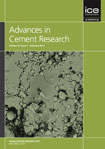
ADVANCES IN CEMENT RESEARCH
Driving Progress in Building and Construction ResearchADVANCES IN CEMENT RESEARCH, published by EMERALD GROUP PUBLISHING LTD, is a leading journal in the fields of Building and Construction as well as Materials Science, holding a prestigious Q2 category ranking in both disciplines as of 2023. With an ISSN of 0951-7197 and E-ISSN of 1751-7605, this journal has been a vital resource since 1987, providing a platform for disseminating innovative research and advancements in cement technology, application, and sustainability. The journal's impact is underscored by its position in the Scopus rankings, featuring a rank of #82 in Engineering _ Building and Construction and #246 in General Materials Science, reflecting its significance within these academic communities. Although open access options are not currently offered, the journal remains accessible through academic libraries and institutions, facilitating its contribution to the advancement of knowledge in cement research. This journal is essential for researchers, professionals, and students dedicated to exploring cutting-edge developments in the cement industry and building materials, offering insights that sculpt the future of construction and sustainable practices.
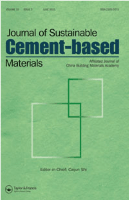
Journal of Sustainable Cement-Based Materials
Innovating for a greener tomorrow in cement materials.Journal of Sustainable Cement-Based Materials, published by TAYLOR & FRANCIS LTD, is an esteemed academic journal dedicated to advancing the field of sustainable construction materials, particularly within the realms of cement-based technologies. With its ISSN 2165-0373 and E-ISSN 2165-0381, the journal emphasizes impactful research focused on environmentally friendly practices and innovations in material development. Based in the United Kingdom, it has garnered a strong reputation, evidenced by its Q1 rankings in both Ceramics and Composites and Waste Management and Disposal categories for 2023. The journal provides a vital platform for researchers, professionals, and students aiming to explore topics from recycling methodologies to carbon footprint reduction in cement production. Although it is not an Open Access publication, the journal's commitment to disseminating high-quality, rigorous research makes it an essential resource for those pursuing advancements in sustainable construction practices.

STEEL AND COMPOSITE STRUCTURES
Exploring the Intersection of Materials Science and EngineeringSTEEL AND COMPOSITE STRUCTURES is a leading academic journal published by TECHNO-PRESS, dedicated to the fields of Building and Construction, Civil and Structural Engineering, and Materials Science. With a notable Impact Factor and classified in Q1 and Q2 quartiles in multiple relevant categories as of 2023, the journal provides a high-quality platform for the dissemination of innovative research from its converged publishing years of 2004 to 2024. The journal's rigorous peer-review process ensures that only the most impactful studies receive publication, fostering advancements in composite materials and steel structures. Researchers, professionals, and students alike can gain valuable insights into current technologies and applications in these critical fields, making STEEL AND COMPOSITE STRUCTURES an essential resource for anyone involved in structural engineering and materials research. The journal is based in South Korea, and while it offers traditional access options, the breadth of its contributions ensures a global reach and influence.

ACI STRUCTURAL JOURNAL
Pioneering Insights in Concrete and Structural DesignThe ACI Structural Journal, published by the American Concrete Institute, serves as a premier platform for scholarly articles and research findings in the fields of building and construction and civil and structural engineering. With a commitment to advancing concrete technology and its applications, this journal has amassed an impressive reputation, holding a Q2 ranking in both Building and Construction and Civil and Structural Engineering categories as of 2023. The journal’s focus on innovative research and practical applications enables professionals, researchers, and students to stay at the forefront of industry developments. Although it does not offer open access, the content bears significant impact, ensuring that readers engage with high-quality research. As the journal converges its years of publication from 1987 to 2024, it continues to enrich the academic and professional discussions surrounding structural engineering and concrete science.

Advances in Concrete Construction
Fostering Excellence in Building EngineeringAdvances in Concrete Construction, published by TECHNO-PRESS in South Korea, is a pivotal academic journal dedicated to the fields of Building and Construction, Civil and Structural Engineering, and Mechanics of Materials. Established with the aim of fostering innovative research, this journal has rapidly gained recognition, achieving a commendable Q2 ranking across multiple categories, including Safety, Risk, Reliability, and Quality as of 2023. Featuring a blend of rigorous peer-reviewed articles, the journal serves as a vital platform for scholars, engineers, and students alike to disseminate cutting-edge research and practical applications in concrete construction technologies. Despite its absence of Open Access, the journal's inclusion in Scopus with notable rankings - such as #66 in Building and Construction - underscores its growing influence and commitment to quality as it converges on significant advancements from 2016 to 2024. By contributing to this respected journal, you join a community dedicated to exploring the future of sustainable and efficient construction practices.
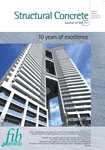
Structural Concrete
Pioneering Research in Concrete TechnologiesStructural Concrete, published by ERNST & SOHN, is a premier journal dedicated to the field of Civil and Structural Engineering, focusing on innovative research and advancements in concrete materials and technologies. With an impressive impact factor and a consistent ranking in the Q1 category of both Building and Construction and Civil and Structural Engineering, the journal stands as a vital resource for researchers, professionals, and students alike. It is indexed with notable Scopus ranks, underscoring its significance within the academic community. The journal spans a comprehensive scope (from 2001 to the present) that encompasses diverse topics related to the behavior, design, and application of structural concrete. Although not an open access publication, it offers valuable insights and cutting-edge knowledge that contribute to the ongoing evolution of construction practices and materials science. Structural Concrete is an essential platform for sharing pioneering findings and fostering collaboration within this dynamic field.
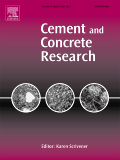
CEMENT AND CONCRETE RESEARCH
Unveiling the Future of Cement and Concrete TechnologyCement and Concrete Research is a prestigious peer-reviewed journal published by Pergamon-Elsevier Science Ltd, dedicated to advancing the field of building and construction materials. With an impressive impact factor securing its place in the Q1 quartile rankings for both Building and Construction and Materials Science, this journal serves as a vital platform for disseminating high-quality research. Since its inception in 1971, the journal has evolved to include a broad scope that encompasses innovative studies on cement, concrete, and their applications, fostering knowledge that directly impacts industry practices. Although it is not an open-access journal, it is widely recognized for its significant contributions, ranking #2 out of 223 in Engineering: Building and Construction and #17 out of 463 in General Materials Science. Researchers, professionals, and students alike are encouraged to engage with the latest findings published in this journal, which remains at the forefront of scientific inquiry in materials innovation and development.

Journal of Materials and Engineering Structures
Pioneering Insights for a Sustainable TomorrowJournal of Materials and Engineering Structures is a pioneering Open Access journal published by MOULOUD MAMMERI UNIVERSITY OF TIZI-OUZOU, dedicated to advancing the field of materials science and engineering. Since its inception in 2014, the journal has aimed to provide researchers, professionals, and students with a platform for sharing cutting-edge research and innovative applications in materials engineering and construction structures. Although the HIndex and Scopus ranking data are not specified, the journal plays a crucial role in disseminating knowledge that contributes to the development of sustainable and efficient engineering practices. With its commitment to accessibility and knowledge sharing in the heart of Algeria, the Journal of Materials and Engineering Structures is poised to make a significant impact on both local and global academic communities.
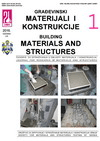
Gradevnski Materijiali I Konstrukcije-Building Materials and Structures
Pioneering sustainable practices in building materials and structures.Gradevnski Materijiali I Konstrukcije - Building Materials and Structures is a premier open-access journal dedicated to advancing the field of construction materials and structural engineering. Published by SOC MATERIALS & STRUCTURES TESTING SERBIA, this journal provides a platform for researchers, professionals, and students to share their innovative findings and developments in building materials. With a commitment to open-access since 2012, it fosters unrestricted availability of research for a wider audience, encouraging collaboration and knowledge dissemination. The journal features a diverse range of topics, including material testing, structural integrity, and sustainable construction practices, making it a vital resource for those engaged in the design and analysis of structural components. By fostering the advancement of research and practice in this crucial sector, Gradevnski Materijiali I Konstrukcije plays an essential role in shaping the future of construction and material science.

ACI MATERIALS JOURNAL
Elevating Knowledge in Materials Science and EngineeringWelcome to the ACI Materials Journal, a premier publication in the field of materials science and engineering, published by the American Concrete Institute. Since its inception in 1987, this journal has continually contributed to advancing the understanding of concrete materials and structures, playing a vital role in both academic and practical applications. With an impressive impact factor and consistently ranking in the Q1 category for Building and Construction and Civil and Structural Engineering, the ACI Materials Journal is recognized for its rigorous peer-review process and high-quality research contributions. It serves as a crucial platform for researchers, practitioners, and students, featuring articles that explore innovative materials, sustainable practices, and cutting-edge technology, all of which are essential for the future of the civil engineering domain. Although the journal is not open access, it remains accessible to a vast audience through institutional subscriptions.